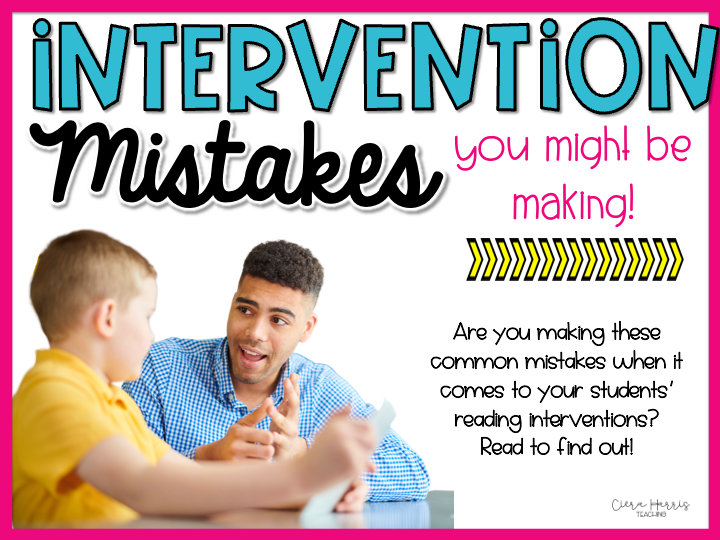All teachers want their classrooms filled with learning and students who see so much success and growth. However, this hope is often easier said than done. It takes a lot of hard work to run a successful classroom. Luckily, I’ve got one of the best secrets: data! Yes, I said it! Data is one of the most important concepts and elements of a successful classroom. Since you’re probably wondering, “What data should you be collecting?” let’s explore this essential concept. We will even look at helpful reading comprehension worksheets and how to apply data collection to them.
Want to watch the video instead? Check it out below! Make sure to subscribe to get updates on all new content!
The D word is usually considered one of the bad words in the realm of Education. However, this is not just another buzzword or current trend. Data is an essential factor in whether or not students will be successful. Ultimately, it helps us know how to help students as they travel along their educational journey.
Qualitative Data versus Quantitative Data
There is an essential understanding to gain before diving into data collection. This is the difference between qualitative data and quantitative data. Qualitative data is what you collect through observations. It is not number-based but observing behaviors. Quantitative data comes from numbers. This is your test scores and things you can calculate.
When collecting data, it is essential to collect both. Don’t rely on one or the other because you want to ensure that one set matches the other. This aspect provides tons of helpful insight. For instance, teachers can see if a student is a bad test taker or if they are struggling with a certain aspect. Having both means you have a balance and two points to ensure the data is correct.
Comprehension Assessments
There are so many data points teachers can collect in ELA. Since comprehension is a driving force behind so much in life, let’s start there.
Teachers can collect cold and warm comprehension assessments. A cold one is giving them a text they’ve never read before and assessing them by asking specific questions. This could be verbal or pencil and paper. A warm one is providing a story or text they’ve already read. Students have interacted with it all week and take a comprehension assessment on Friday.
Which Is Better?
Everyone has a different opinion. However, I will explain why a cold read is the best way to gauge comprehension when collecting data. A cold comprehension assessment means students have zero support over the reading. They have not read it and discussed it multiple times. So, you will get an accurate snapshot of strengths and struggles. Ultimately, a cold assessment provides excellent insight into where your students are at.
Use this FREE Comprehension Toolkit with your assessments!

Mode of Assessment
There are always multiple ways to collect data. Some teachers prefer paper and pencil, while others prefer a face-to-face conference. Personally, I feel face-to-face brings much better data than paper and pencil. This allows you to get loads more information! Students are not just circling an answer based on a guess or giving a one or two-sentence response. Instead, they talk about their answer and explain their reasoning. Additionally, this allows me to see misconceptions and take notes on focus areas. We simply cannot get this information in a paper and pencil assessment.
Data Collection
A face-to-face assessment will be more challenging to grade than a multiple-choice question. However, there is still a fantastic way to collect data points: rubrics! You can have a rubric for each assessed skill. This may be main idea, making inferences, using context clues, and making predictions. You can make your levels and categories.
Want to watch the video instead? Check it out below! Make sure to subscribe to get updates on all new content!
Data Collection Tips
Now that we’ve focused on grading reading comprehension, let’s explore some tips to make this process impactful on student growth.
1.Know the Text
You need to know the text inside and out. Additionally, you understand what kinds of thinking need to occur for students to comprehend the text successfully. This includes important inferences, vocabulary words, and terms that may cause students to struggle. Make sure you have your questions figured out beforehand with the types of thinking needed to comprehend the story.
2. Think About the Thinking
After reading and analyzing the text, you must ensure you’re asking the right questions. So, if you are assessing inferences, ensure you have questions matching. Be careful not to just ask basic comprehension questions. Ask questions based on the thinking needed beyond comprehending the text itself.
3. Analyze Reading Behaviors
While reading, look for words students have trouble decoding. Look at their expressions to see where they struggle. It is essential to pick up reading behaviors that could hurt their reading comprehension skills.
4. Vary When You Ask Questions
It is important to ask questions while students read and after they read. Questions while they read can be more about strategies, such as connections, visualizations, and questions they have. After reading, ask questions that ensure students understand the whole scope of the story.
How Do I Do This?
At this point, you may be wondering how to actually put everything together. I understand there is a lot when assessing students! So, I created reading assessments for you! There are Reading and Math Interventions for quick practice. There are also Reading Comprehension Interventions that provide 120 activities with lesson plans. One of my favorites are the Differentiated Reading Assessments because every passage is differentiated for above level, on level, or below level. Additionally, a Reading Comprehension Skills and Strategies Bundle focuses on specific skills. There are resources for summarizing, inferences, main idea, text features, and much more!
Teachers have a huge goal of helping every single student learn and show growth. A key part of doing this involves breaking down data and understanding which types of assessments to use. So, when wondering, “What data should you be collecting?” think about the skills. Then, based on that, plan activities, reading comprehension worksheets, and rubrics! As time passes, you will gain confidence in your data collection skills.
If you do not want to miss any of the upcoming lessons, join my email list to be notified of all the interactive lessons coming up! By joining the email list, you will receive freebies for blog exclusive subscribers!
Want to save this post for later? Make sure to pin the image below!










